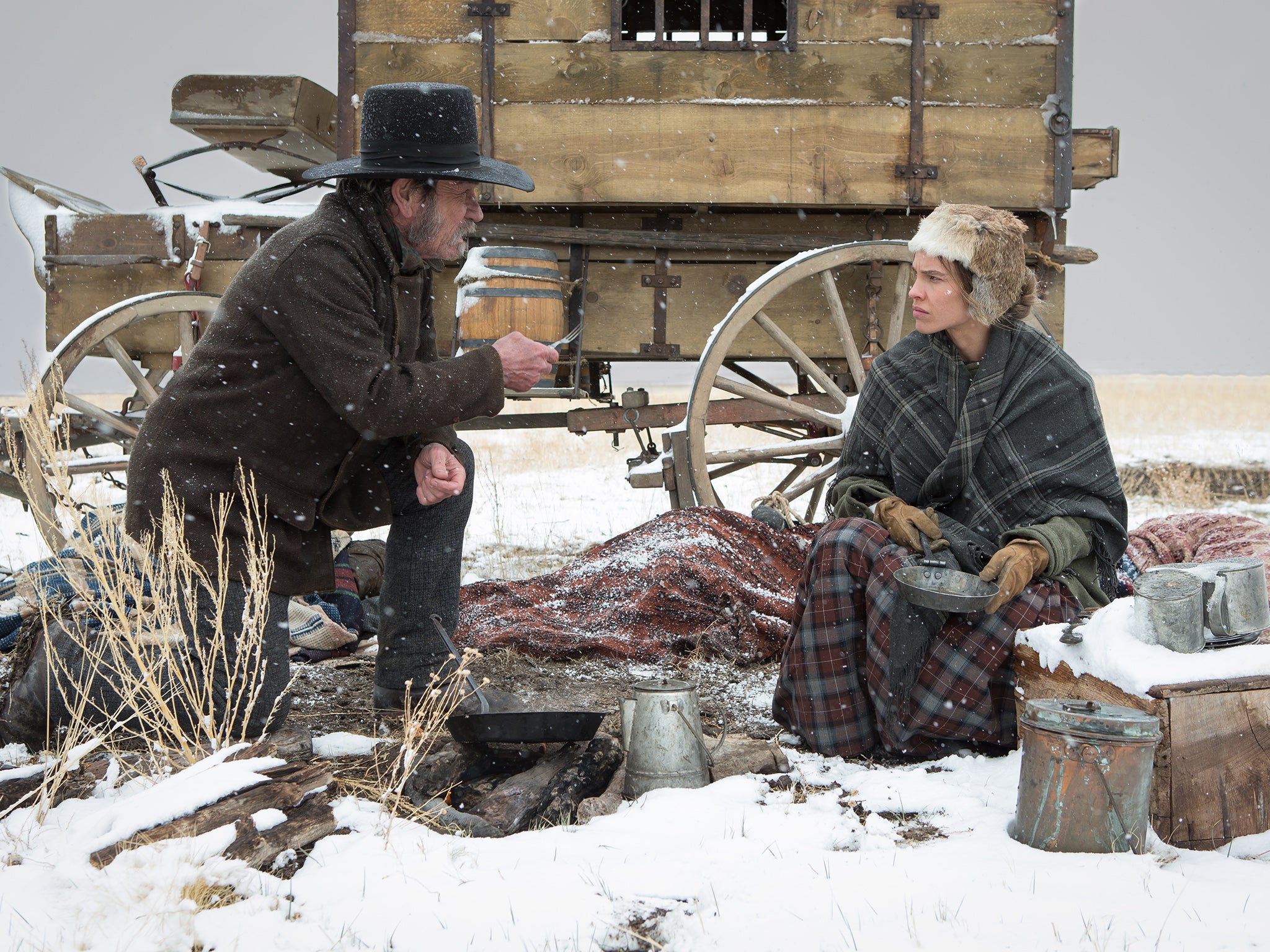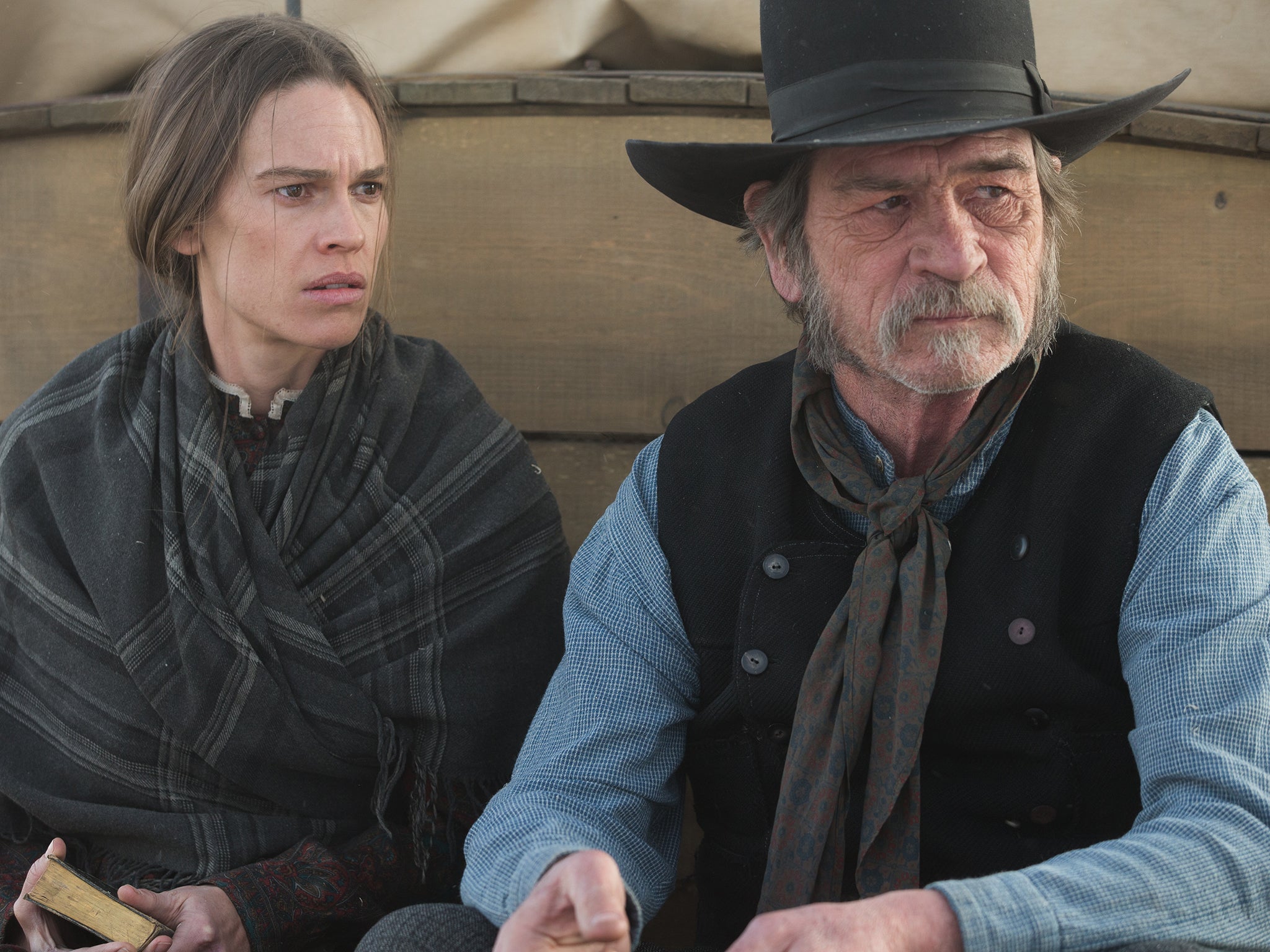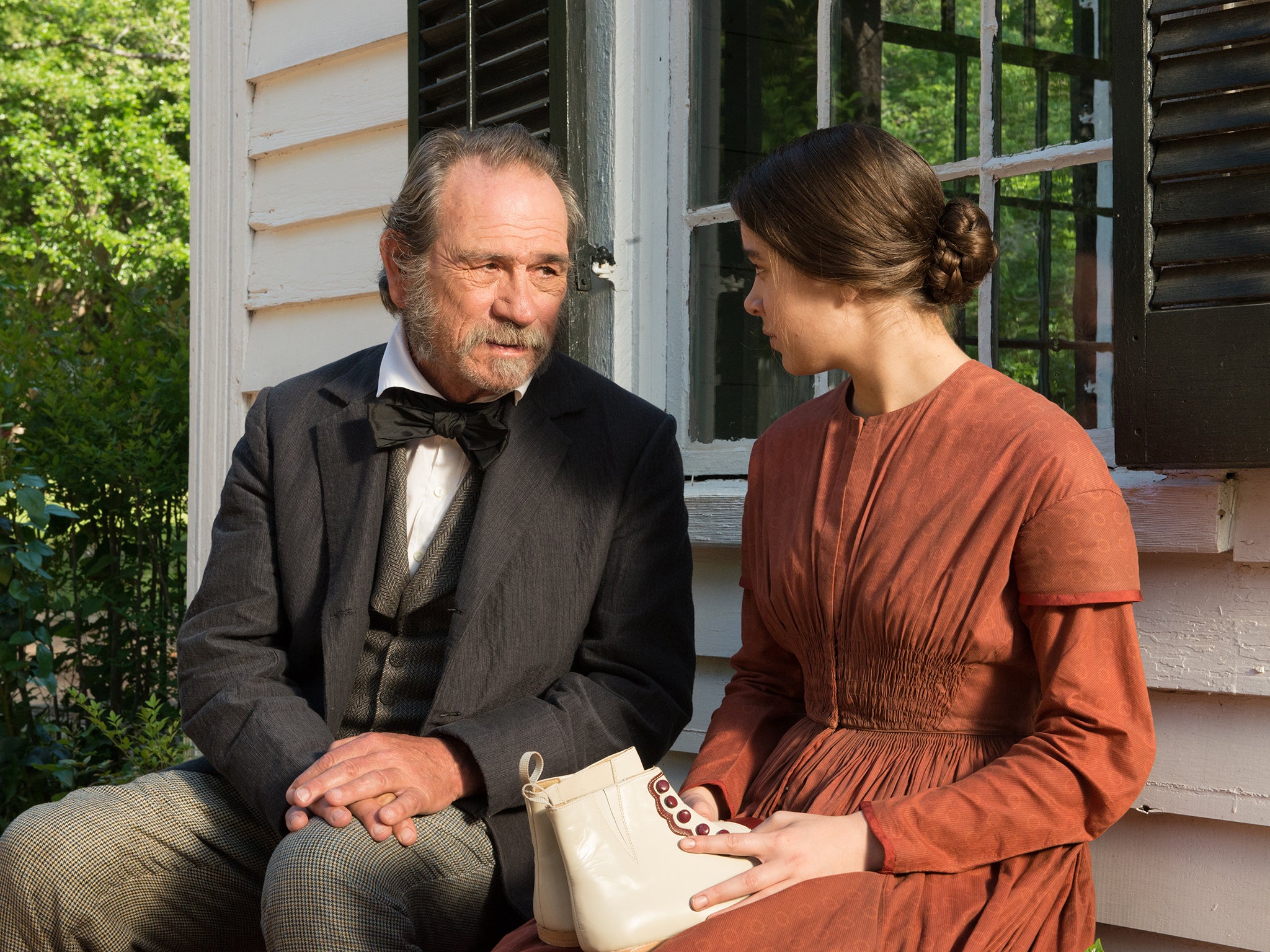The Homesman, film review: Jones finds new frontiers in the Old West
This film is probably the best Western since Clint Eastwood’s Unforgiven – so inscrutable, so distinctive and, finally, so moving

Your support helps us to tell the story
From reproductive rights to climate change to Big Tech, The Independent is on the ground when the story is developing. Whether it's investigating the financials of Elon Musk's pro-Trump PAC or producing our latest documentary, 'The A Word', which shines a light on the American women fighting for reproductive rights, we know how important it is to parse out the facts from the messaging.
At such a critical moment in US history, we need reporters on the ground. Your donation allows us to keep sending journalists to speak to both sides of the story.
The Independent is trusted by Americans across the entire political spectrum. And unlike many other quality news outlets, we choose not to lock Americans out of our reporting and analysis with paywalls. We believe quality journalism should be available to everyone, paid for by those who can afford it.
Your support makes all the difference.Not since John Wayne and Montgomery Clift set off on their epic cattle drive in Howard Hawks’s Red River (1948) has there been a more unusual pairing than Tommy Lee Jones and Hilary Swank in Jones’s magnificent new feature, The Homesman.
This is a rambling, beautifully made film, combining humour, lyricism and brutality with the elegiac undertow that so many latterday Westerns seem to possess.
In interviews and sometimes on screen itself, Jones comes across as a curmudgeon who seems to find the entire business of making and promoting films tiresome in the extreme. Belying his gruff persona, The Homesman possesses a great subtlety and delicacy, not least in its portrayal of the plight of women in the Old West.
The film reverses the usual trajectory of Westerns. Generally, these are westward ho! affairs in which the pioneers in their wagons are taking over new territories. Here, the characters are heading in the reverse direction, retreating back toward “civilisation”. Homesteader Mary Bee Cuddy (Swank) and US army deserter George Briggs (Jones) are on an epic five-week journey with three women as their human cargo.
Due to deaths, disease and the brutality of frontier life, the women have lost their sanity. Their community can’t cope with them. “People like to talk about death and taxes but when it comes to crazy, they stay hushed up,” one character observes of the townsfolk’s muted reaction to these afflicted women.
The Homesman is adapted from a novel by Glendon Swarthout. Jones, who co-wrote the screenplay with Kieran Fitzgerald and Wesley Oliver, pays close attention to the courtship rituals and sexual behaviour of the settlers. Early on, there is a wonderful scene in which Cuddy has dinner with (she thinks) a potential suitor. They eat at table with fancy linen and he brings her a piece of cheese. She is desperate for a husband and mentions marriage to him in a matter-of-fact fashion, as if it is simply a matter of common sense for both of them.

Cuddy’s refinement is contrasted with several grimly comic sex scenes in which we see characters thrusting away in animalistic fashion, generally with most of their clothes still on and bewildered expressions on their faces. The 1850s Nebraska shown in The Homesman is a muddy and oppressive place. The cinematographer Rodrigo Prieto emphasises its stark beauty but also its emptiness. There are frequent shots of bleached-out landscapes in which next to nothing, not even trees, can be seen.
Like Luise Rainer in the 1930s, Hilary Swank has won two Oscars for Best Actress without becoming a household name. She gives a very fine performance here as the spinster who dresses Emily Dickinson-style in a bonnet and long skirts but turns out to be far more resourceful than any of the menfolk around her. She is referred to as being “plain as an old tin can” and as “bossy,” but Swank portrays her as a passionate woman whose stern, priggish behaviour can’t quite hide her inner desires. There is comedy in the performance – her character has some of the same tomboy-ish qualities as Mattie Ross in True Grit – but also pathos and desperation.
As the renegade George Briggs, Tommy Lee Jones makes a screen entrance which could have been borrowed from an old Mack Sennett silent comedy. Vigilantes smoke him out of the house that he has squatted in. He is first seen fleeing the flames in his underwear. He is a dirty, uncouth figure who is attached to nothing but himself.
Jones’s Briggs has the boorishness of John Wayne in Rooster Cogburn mode. He’s a whiskered, dirty and venal character, very badly in need of redemption. He is capable of behaving as viciously as any gun-toting outlaw. Then, when he encounters the well-spoken preacher’s wife Altha Carter (Meryl Streep), he will seem as if he is a righteous, God-fearing pillar of the community.

The Homesman continually confounds expectations. At times, it seems like a conventional Western, with marauding Indians, fist fights, fire and gun play. There is the inevitable attrition between the uptight woman and her dissolute travelling companion. We can tell that the antagonism between them will gradually give way to mutual respect and, ultimately, affection. It is not too hard to guess, either, that the two characters will take on some of each other’s attributes: that Briggs will discover some of Cuddy’s sense of duty and that she, in turn, will learn from his earthy pragmatism.
All this is very predictable, but Jones comes at his material in a way that is as reminiscent of the work of Jane Campion as it is of Howard Hawks. There are strangely picturesque interludes in which we see the disturbed women bathing in the river or combing their hair, looking like Victorian gentlewomen on leave from Picnic at Hanging Rock.
At the beginning of the journey, they are violent to each other and to themselves. They are kept locked in the wagon and are tied to its wheels in breaks from the journey. Briggs even accompanies them on their toilet breaks. As the journey progresses, their behaviour changes. They become more docile. One moment, there will be knockabout comedy involving a man on a horse with a noose around his neck. The next, we will be confronted with extraordinarily bleak scenes in which a desperate mother is shown throwing her new-born baby into the privy.
One of The Homesman’s greatest strengths is its ambiguity. Traditional Westerns tended to have a very simplistic morality. Revisionist successors often threw in self-consciously Freudian elements. Jones doesn’t follow either approach. He doesn’t explain his characters’ behaviour or motivations. Instead, he gives them a sense of mystery.
The fact that they can be grief-stricken one moment and dancing a wild jig the next is what makes this film – probably the best Western since Clint Eastwood’s Unforgiven – so inscrutable, so distinctive and, finally, so moving.
Join our commenting forum
Join thought-provoking conversations, follow other Independent readers and see their replies
Comments